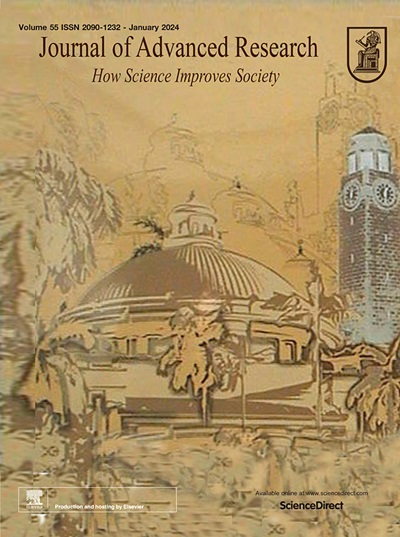Exploiting metabolic vulnerabilities through synergistic ferroptosis and disulfidptosis for breast cancer therapy
IF 11.4
1区 综合性期刊
Q1 MULTIDISCIPLINARY SCIENCES
引用次数: 0
Abstract
Introduction
Ferroptosis represents a promising therapeutic approach for breast cancer treatment. However, cancer cells can develop resistance through the SLC7A11–GSH–GPX4 axis, wherein increased SLC7A11 expression enhances cystine uptake, replenishes GSH, and reactivates GPX4. Notably, cells with high SLC7A11 expression become vulnerable to disulfidptosis under glucose-deprived conditions.Objectives
We aimed to develop a dual-mode therapeutic strategy that simultaneously induces ferroptosis and disulfidptosis by targeting both lipid peroxidation and glucose metabolism in breast cancer cells.Methods
Fe-Cu-SS metal–organic frameworks (MOFs) loaded with BAY876 (FCSP@876 MOFs) were synthesized to enhance ferroptosis and trigger disulfidptosis in breast cancer cells. The MOFs were characterized using transmission electron microscopy (TEM), Fourier-transform infrared (FTIR) spectroscopy, X-ray photoelectron spectroscopy (XPS), and UV–Vis spectroscopy. In vitro experiments demonstrated that FCSP@876 MOFs increased reactive oxygen species (ROS) levels and lipid peroxidation while depleting NADPH. Western blotting and actin filament staining confirmed the underlying mechanisms. In vivo xenograft experiments in BALB/c mice assessed the synergistic effects of ferroptosis and disulfidptosis induction.Results
During ferroptosis induction, cancer cells exhibited an adaptive upregulation of SLC7A11 expression. FCSP@876 MOFs effectively counteracted this resistance mechanism by simultaneously inducing ferroptosis and restricting glucose uptake through BAY876, leading to NADPH depletion and subsequent disulfidptosis. Both in vitro and in vivo experiments demonstrated the enhanced therapeutic efficacy of this dual-mode strategy compared with single-mode treatments.Conclusion
This study successfully developed a novel therapeutic strategy that combines ferroptosis and disulfidptosis using FCSP@876 MOFs, offering a promising approach for overcoming ferroptosis resistance in breast cancer therapy.

求助全文
约1分钟内获得全文
求助全文
来源期刊

Journal of Advanced Research
Multidisciplinary-Multidisciplinary
CiteScore
21.60
自引率
0.90%
发文量
280
审稿时长
12 weeks
期刊介绍:
Journal of Advanced Research (J. Adv. Res.) is an applied/natural sciences, peer-reviewed journal that focuses on interdisciplinary research. The journal aims to contribute to applied research and knowledge worldwide through the publication of original and high-quality research articles in the fields of Medicine, Pharmaceutical Sciences, Dentistry, Physical Therapy, Veterinary Medicine, and Basic and Biological Sciences.
The following abstracting and indexing services cover the Journal of Advanced Research: PubMed/Medline, Essential Science Indicators, Web of Science, Scopus, PubMed Central, PubMed, Science Citation Index Expanded, Directory of Open Access Journals (DOAJ), and INSPEC.
 求助内容:
求助内容: 应助结果提醒方式:
应助结果提醒方式:


